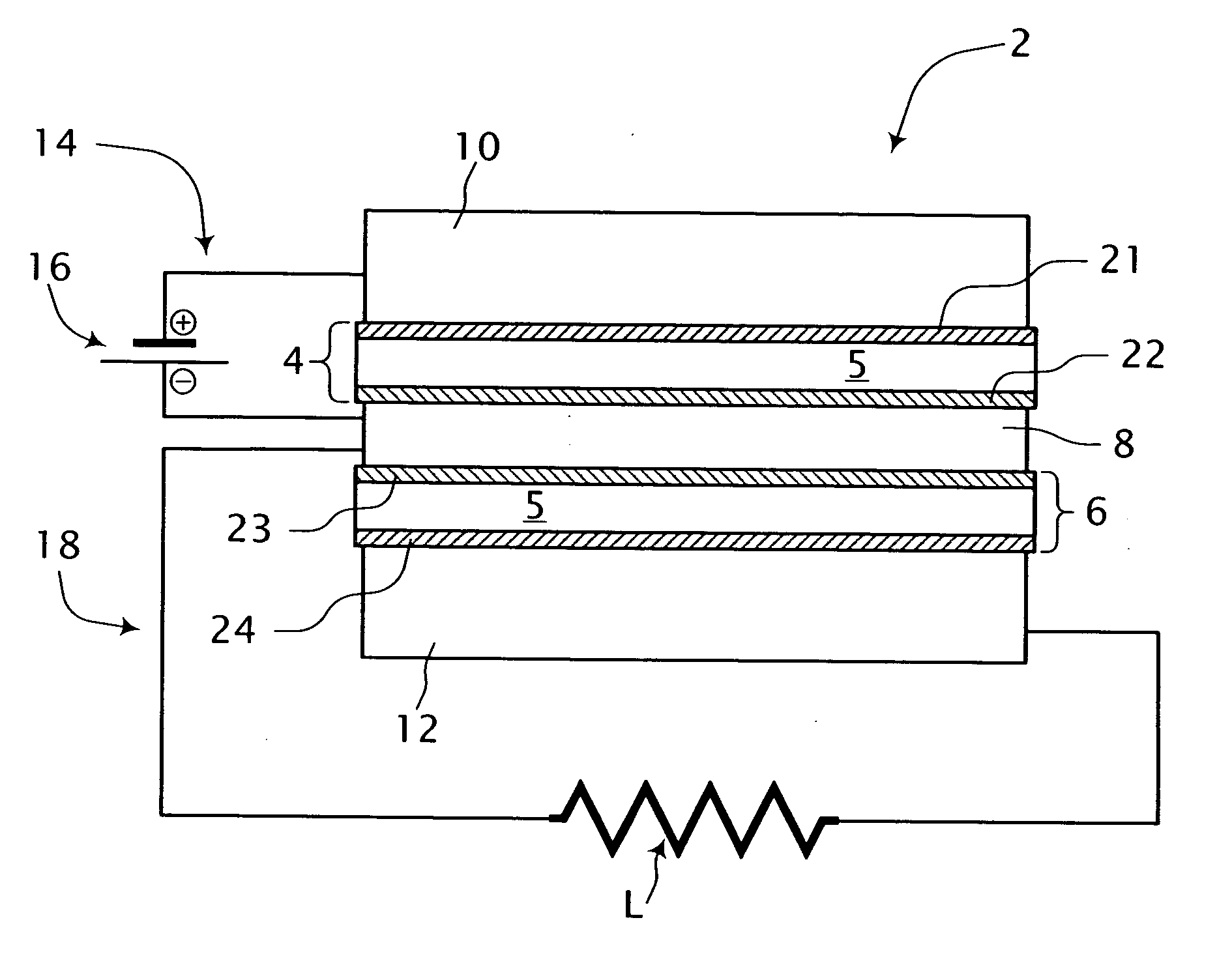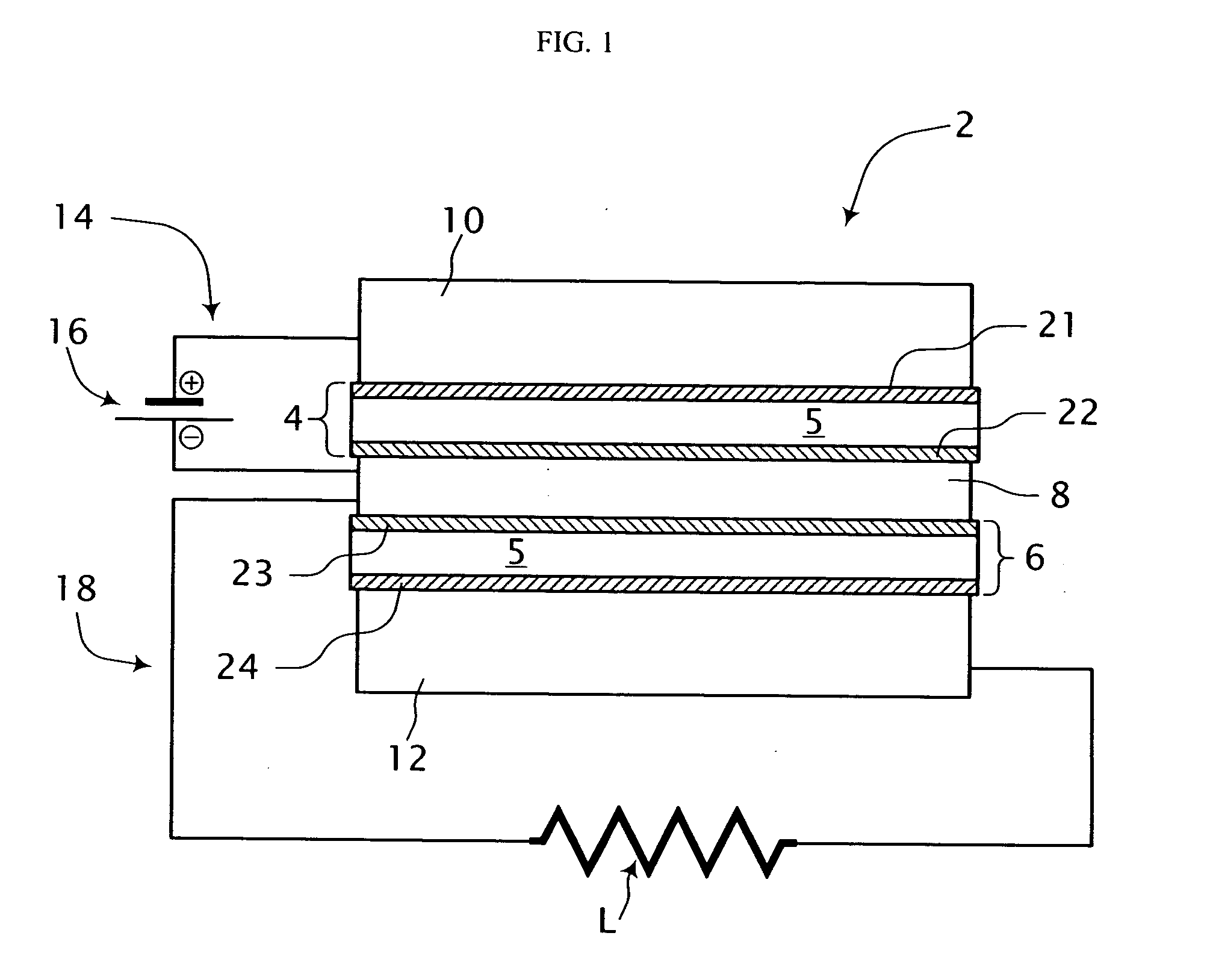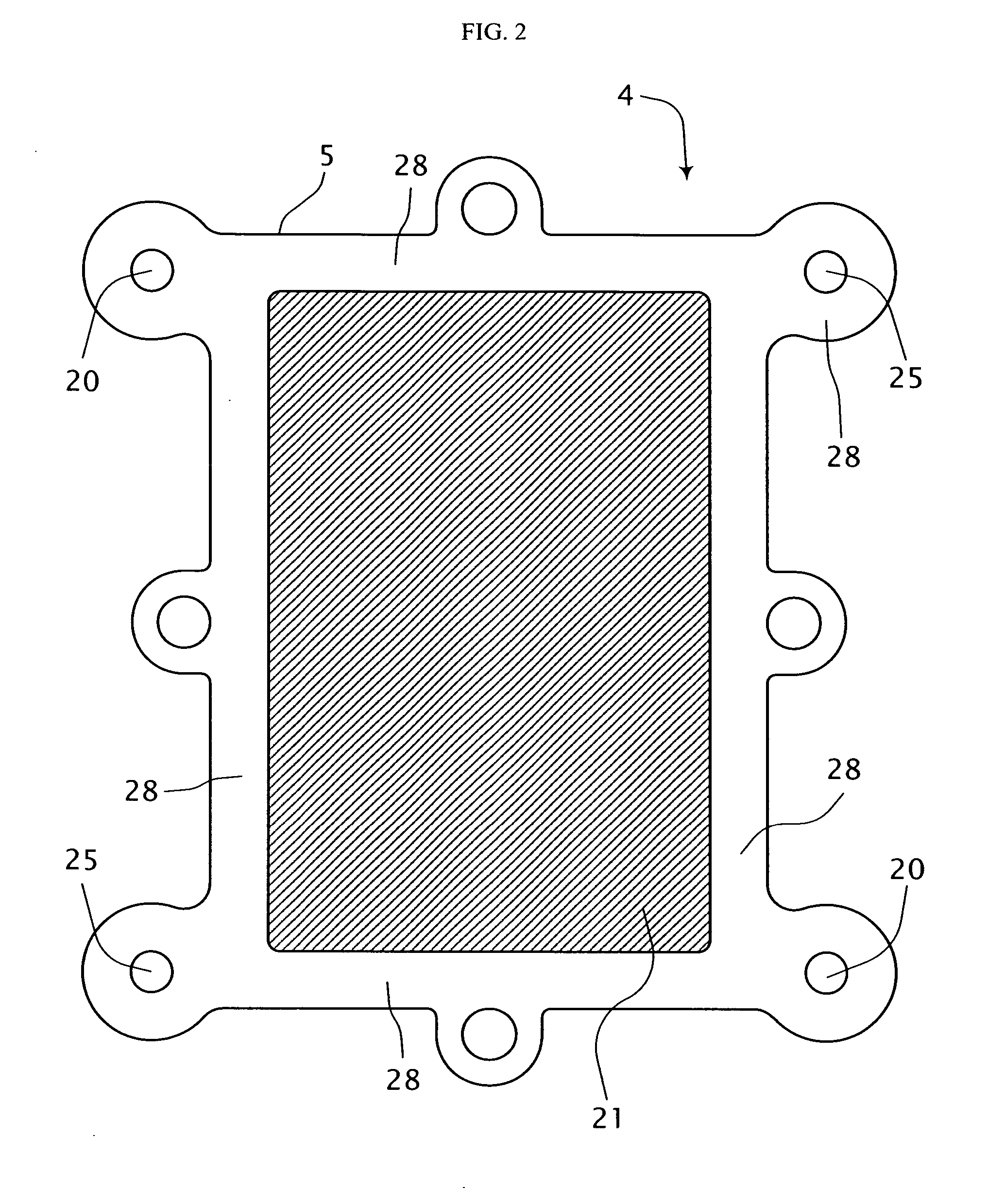Fuel cell system suitable for complex fuels and a method of operation of the same
a fuel cell and complex technology, applied in the field of fuel cell and fuel processing system, can solve the problems of flammability, comparatively high production cost, slow response of steam reforming process, storage difficulties,
- Summary
- Abstract
- Description
- Claims
- Application Information
AI Technical Summary
Benefits of technology
Problems solved by technology
Method used
Image
Examples
Embodiment Construction
[0035] Referring to FIG. 1, a single cell fuel cell system is shown generally at 2. The fuel cell system 2 includes a first electrode-electrolyte assembly 4, a second electrode-electrolyte assembly 6 and an electrically conductive mesh 8 disposed therebetween and in sealing engagement therewith. A first conduit 10 is in fluid communication with one side of the first electrode-electrolyte assembly 4 and a second fluid conduit 12 is in fluid communication with one side of the second electrode-electrolyte assembly 6. At least portions of the first and second conduits 10, 12 comprise an electrically conductive material. The fuel cell system 2 includes a first electrical circuit 14 including an energy storage device 16 for providing process energy in the form of a first electrical potential across the first electrode-electrolyte assembly 4. In addition, an electrical load circuit 18 is connected across the second electrode-electrolyte assembly 6 for consuming energy output therefrom in t...
PUM
 Login to View More
Login to View More Abstract
Description
Claims
Application Information
 Login to View More
Login to View More - R&D
- Intellectual Property
- Life Sciences
- Materials
- Tech Scout
- Unparalleled Data Quality
- Higher Quality Content
- 60% Fewer Hallucinations
Browse by: Latest US Patents, China's latest patents, Technical Efficacy Thesaurus, Application Domain, Technology Topic, Popular Technical Reports.
© 2025 PatSnap. All rights reserved.Legal|Privacy policy|Modern Slavery Act Transparency Statement|Sitemap|About US| Contact US: help@patsnap.com



